2023 British Pavilion offers diverse and dynamic installation at the 2023 Venice Biennale
The 2023 British Pavilion, 'Dancing Before the Moon,' contributes a triumphant blend of ritual, music, and cross-cultural pollination to the biennale’s ‘laboratory of the future’
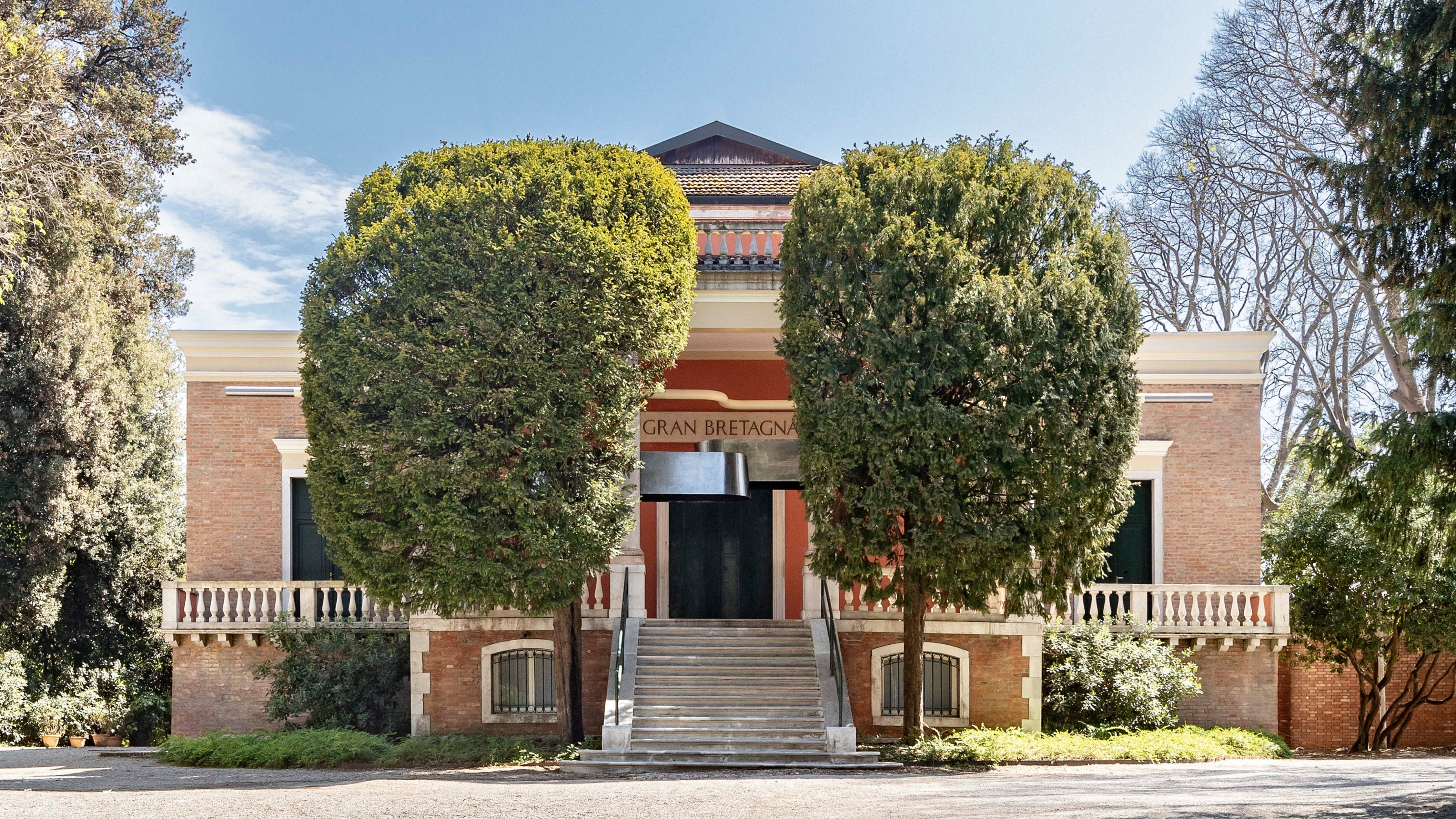
At the newly opened Venice Architecture Biennale, the 2023 British Pavilion’s exhibition, 'Dancing Before the Moon,' stood out for the clarity and directness of its message.
Under the curatorship of Lesley Lokko, the 18th international architecture exhibition pushed hard against the prevailing orthodoxy of architecture culture, eschewing rosters of starchitects and glossily rendered megaprojects in favour of a more considered examination of the systems and structures, both physical and societal, that underpin the modern world.
Within this context, the pavilion's exhibition, 'Dancing Before the Moon,' stood out for the clarity and directness of its message, exploring the way in which the overlooked rituals and practices of a multicultural island nation have become deeply embedded in the fabric of day-to-day life in the UK.

Meneesha Kellay, Joseph Henry, Jayden Ali, and Sumitra Upham, the British Pavilion curatorial team, with the British Council's Sevra Davis
2023 British Pavilion: 'Dancing Before The Moon'
Curated by Meneesha Kellay, Joseph Henry, Jayden Ali, and Sumitra Upham, the project was commissioned by a British Council team led by Sevra Davis. ‘I was quite unequivocal about challenging what we think about architecture,’ Davis recalls, explaining how many of the responses to the brief made this shift. The chosen curation team, however, went one step further, promising to engage with the physical fabric and form of the building.

Jayden Ali - Thunder and Şimşek at the British Pavilion
‘Dancing Before the Moon’ comes from a quote from the American writer James Baldwin: ‘There is a reason, after all, that some people wish to colonize the moon, and others dance before it as an ancient friend.’ The curators assembled a group of practitioners to explore the way in which imported cultural practices adapt and evolve into integral components of British life, even as they sometimes occupied unfriendly and hostile spaces.
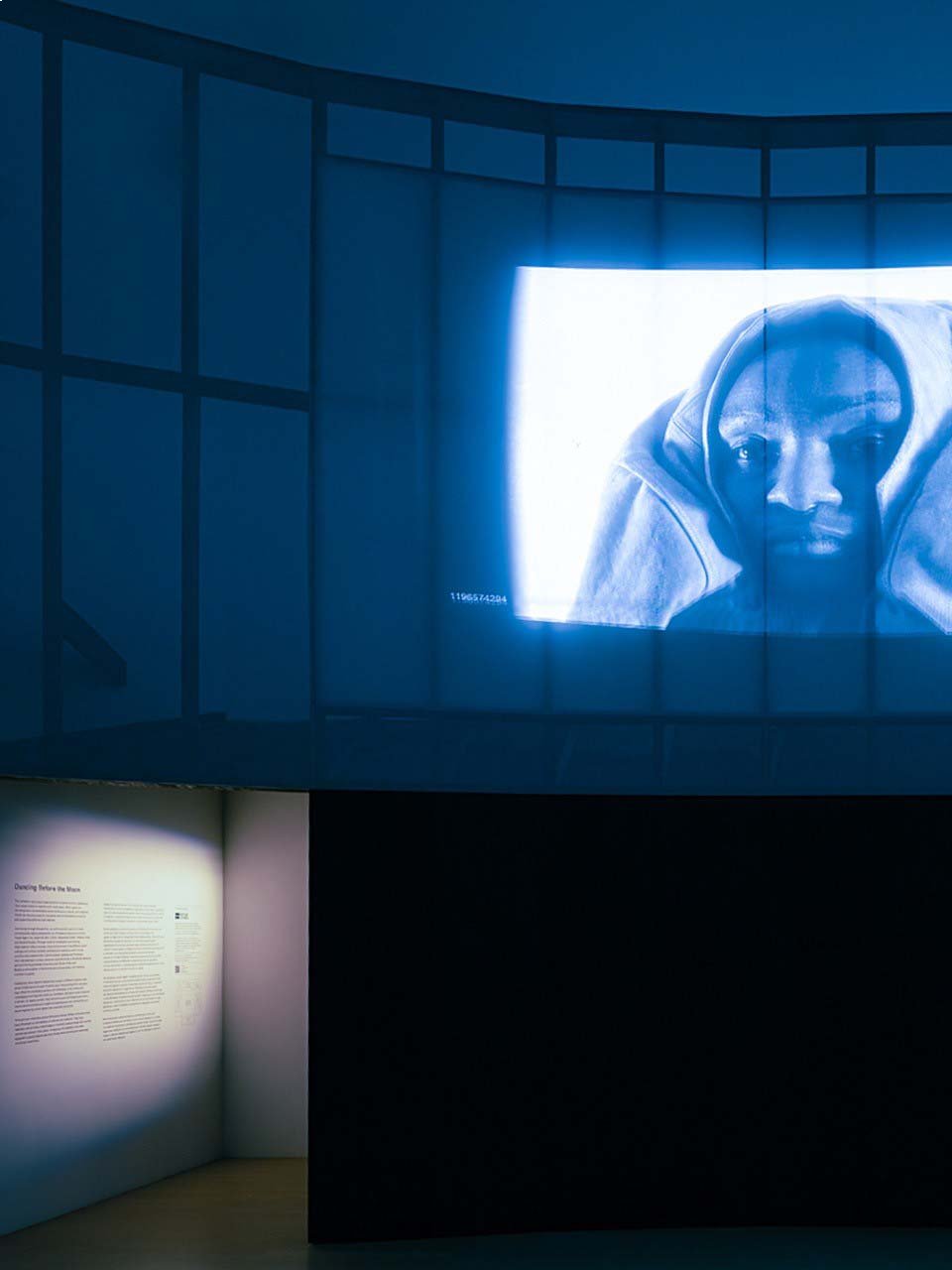
From the Dancing Before the Moon film at the British Pavilion
The neo-classical British Pavilion was completed in 1909 to designs by Edwin Alfred Rickards of Lanchester, Stewart and Rickards, a practice that designed several buildings in British colonies. The various artistic interventions are laden with multiple meanings; not only are they very literally occupying the corridors of power, but they are deliberately large and imposing to make an impact on the space.
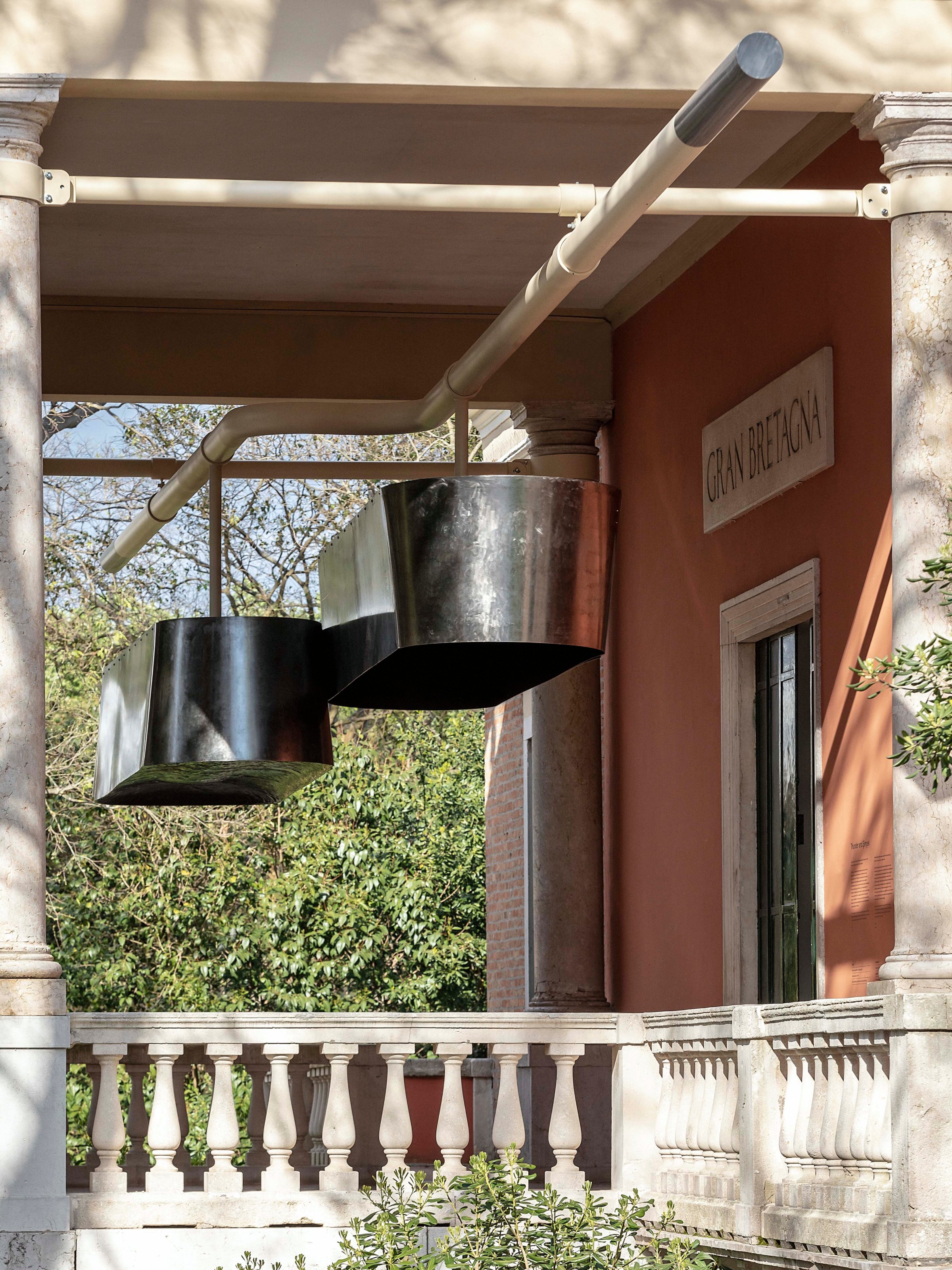
Jayden Ali - Thunder and Şimşek at the British Pavilion
‘Scale was really important from the beginning,’ says Jayden Ali. As well as his curatorial role, the London-based artist and architect is responsible for the vast giant steel pan-inspired sculpture, 'Thunder and Şimşek,' that hangs inside the entrance portico. Ali describes how these objects ‘challenge’ the building, while at the same time they are held up by a clever system of steel braces that in turn uses the columns for support; a metaphor of the support and intersection that his own Trinidadian and Cypriot heritage has with British culture.
Wallpaper* Newsletter
Receive our daily digest of inspiration, escapism and design stories from around the world direct to your inbox.
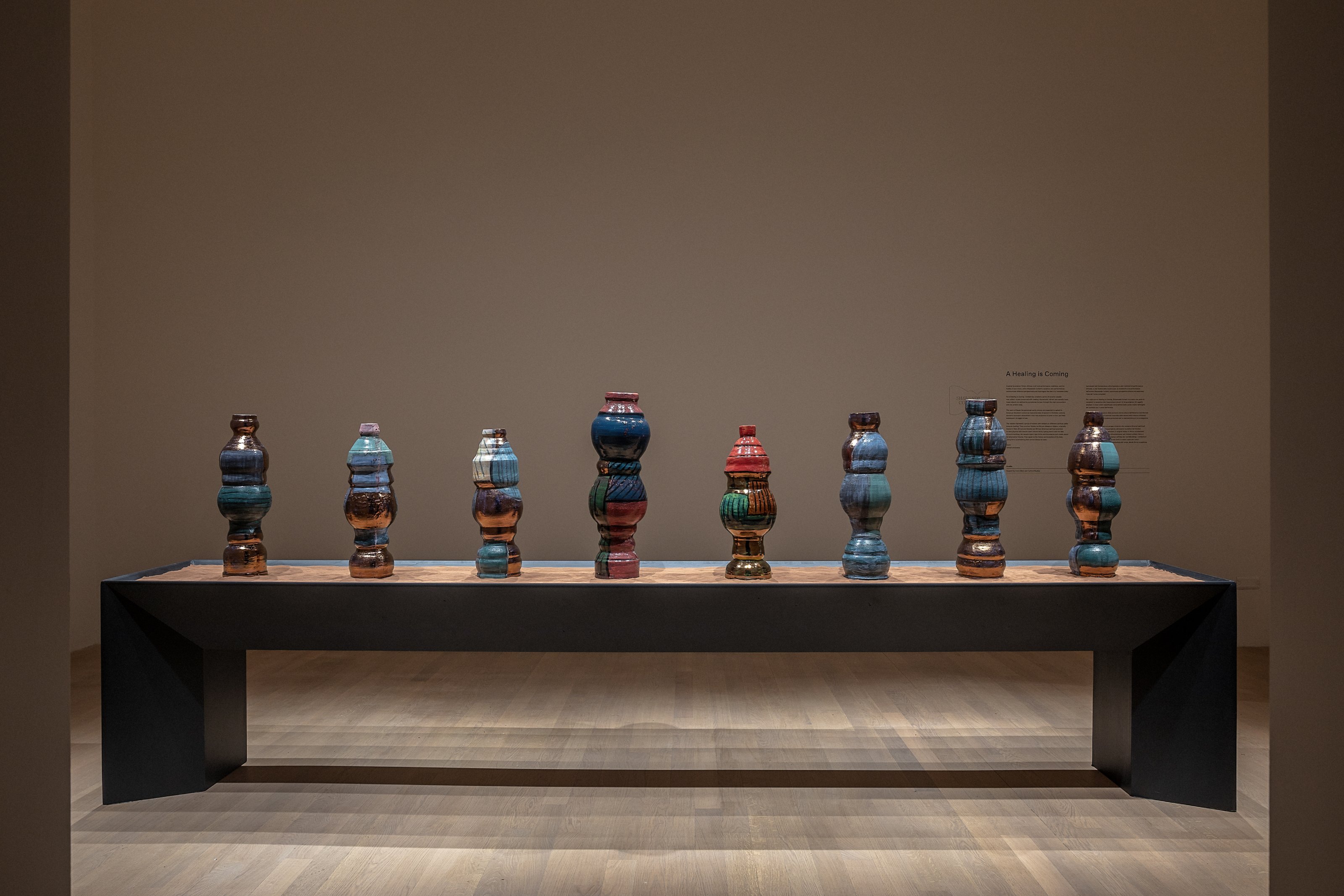
Shawanda Corbett - A healing is coming at the British Pavilion
The main entrance hall hosts the specially commissioned film, a travelogue around the UK, exploring the various rituals that have become part of British life, from dance to car culture, religion to carnival. The soundtrack permeates through the galleries, starting on the left with Shawanda Corbett’s ‘A Healing is Coming’, eight ceramic vessels that celebrate the variety, imperfections and beauty of the female form and rituals around healing. Symbolising eight imagined women embarking on different spiritual healing journeys, the vessels imbued with character and magic.
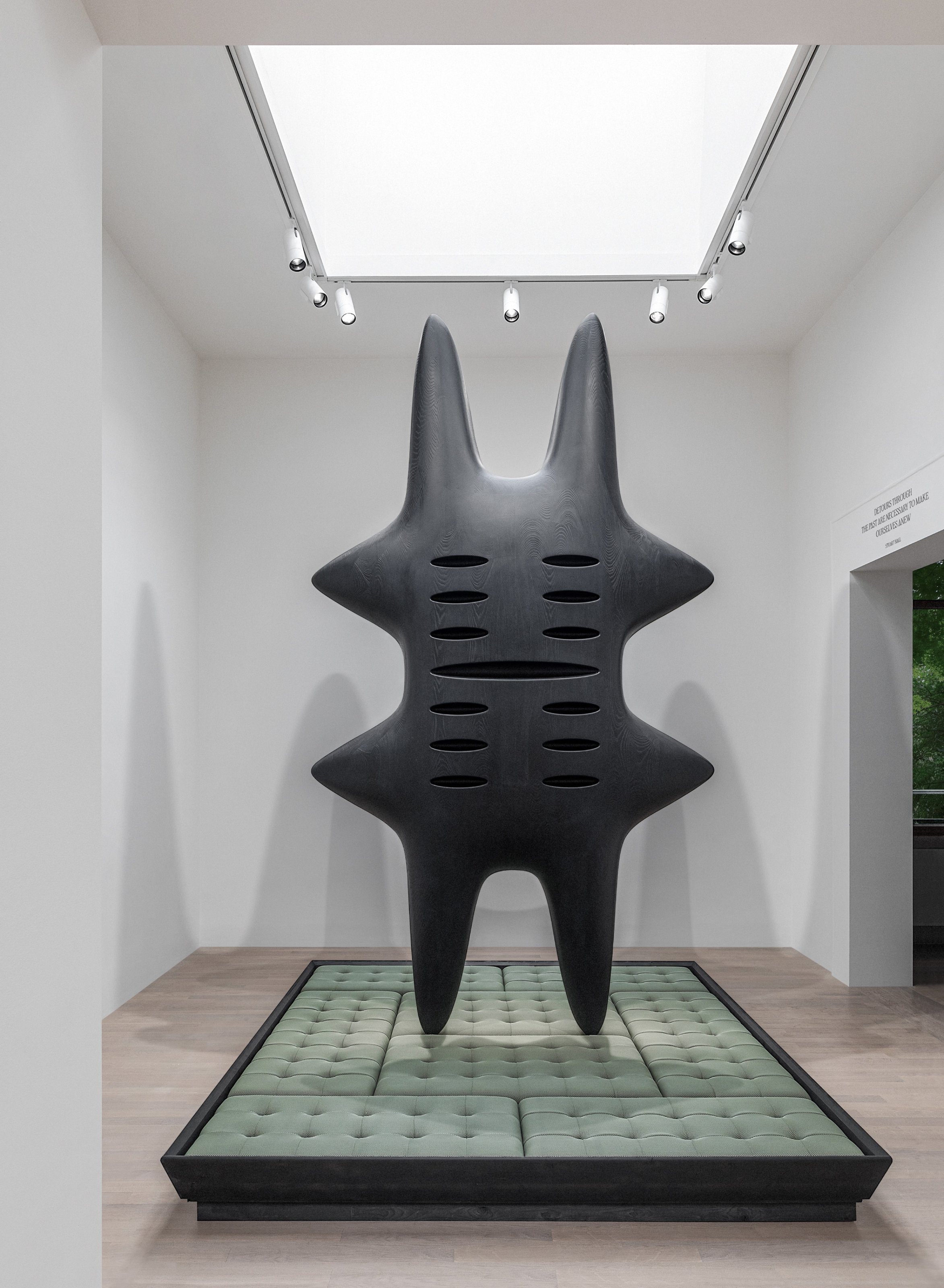
Mac Collins – Runout, at the British Pavilion
Mac Collins’s ‘Runout’ greets the visitor in the next room. This vast wooden assemblage is essentially a giant domino, perched atop an upholstered plinth that evokes the social clubs and pubs where this ever-popular Jamaican game is played. ‘Runout’ is one of many domino games, especially popular in the Midlands, near where the Nottingham-born designer grew up. The sculpture itself is character, part imp, part friendly alien, beamed down into this austere environment and impossible to ignore.
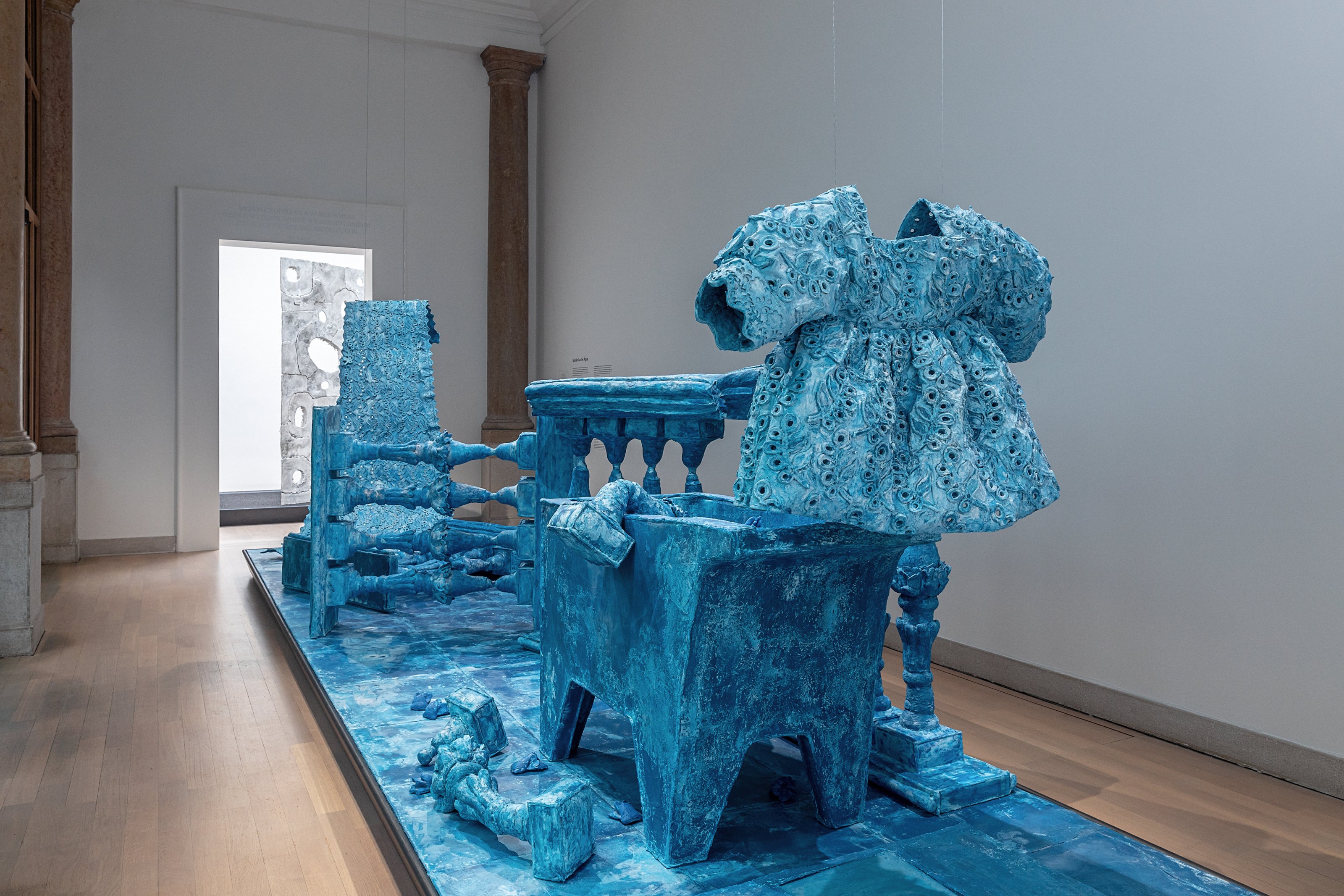
Sandra Poulson, Sãbao Azul e Água, at the British Pavilion
Although none of the installations encroach on one another, the tall doors and openings ensure they all have a visual connection. Sandra Poulson’s Sabão Azul e Água’, a striking blue assemblage of objects, is simultaneously diaphanous and weighty. Poulson has used fabric and textile waste to build her installation, fashioning a parade of stone balustrades, a cascade of lace, a concrete washing tank and a traditional Angolan costume. All are coated in blue soap, Sabão Azul, a symbol of cleanliness but also frequently used to smuggle embedded diamonds out of the country.

Madhav Kidao, Bardo, at the British Pavilion
‘Bardo’, by Madhav Kidao takes the architect’s ‘Between Forests and Skies’ pavilion, installed at the V&A in 2021, melts its down and creates another form altogether. Inspired by his own heritage of Hindu and Buddhist philosophies, Kidao has transformed the molten aluminium into a pock-marked surface, scoured and shaped by the sand it was cast in. Bardos are transitional states that exist between birth, life and death in Buddhist philosophy, and this piece represents a moment of change, as opposed to the finality of traditional Western perceptions of death.

Yussef Agbo-Ola, Muluku 6 Bone Temple at the British Pavilion
Yussef Agbo-Ola’s ‘Muluku: 6 Bone Temple’, dominates the final room in the sequence. Agbo-Ola, founder of Olaniyi Studio, divides his time between London and the Amazon rainforest in French Guiana. An inverted tent of stretched organic cotton, tethered to a frame and the building itself, this ‘temple’ of woven fabric evokes the nomadic animal skin structures of the Cherokee culture, and traditional Yoruba architecture.

Yussef Agbo-Ola, Muluku 6 Bone Temple at the British Pavilion
Dancing Before the Moon represents ‘layers and layers of history,’ according to Ali, ‘it’s not about erasure, it’s about depth,’ he adds. ‘My work is about occupation. It’s a reflection of Britain – all of these people who live and work here. All of these rituals and customs are a part of British life.’ One of Lokko’s guiding principles for the Biennale is that ‘dominant voices [have] ignored huge swathes of humanity.’ 'Dancing Before the Moon' successfully occupies, transforms and engages with space, mirroring society’s ongoing transformation and its effect on art, design and architecture.
Dancing Before the Moon is at the British Pavilion, La Biennale Architettura 2023 is open in Venice until Sunday 26 November 2023, LaBiennale.org
Jonathan Bell has written for Wallpaper* magazine since 1999, covering everything from architecture and transport design to books, tech and graphic design. He is now the magazine’s Transport and Technology Editor. Jonathan has written and edited 15 books, including Concept Car Design, 21st Century House, and The New Modern House. He is also the host of Wallpaper’s first podcast.
-
 From Rembrandt to Warhol, a Paris exhibition asks: what do artists wear?
From Rembrandt to Warhol, a Paris exhibition asks: what do artists wear?‘The Art of Dressing – Dressing like an Artist’ at Musée du Louvre-Lens inspects the sartorial choices of artists
By Upasana Das
-
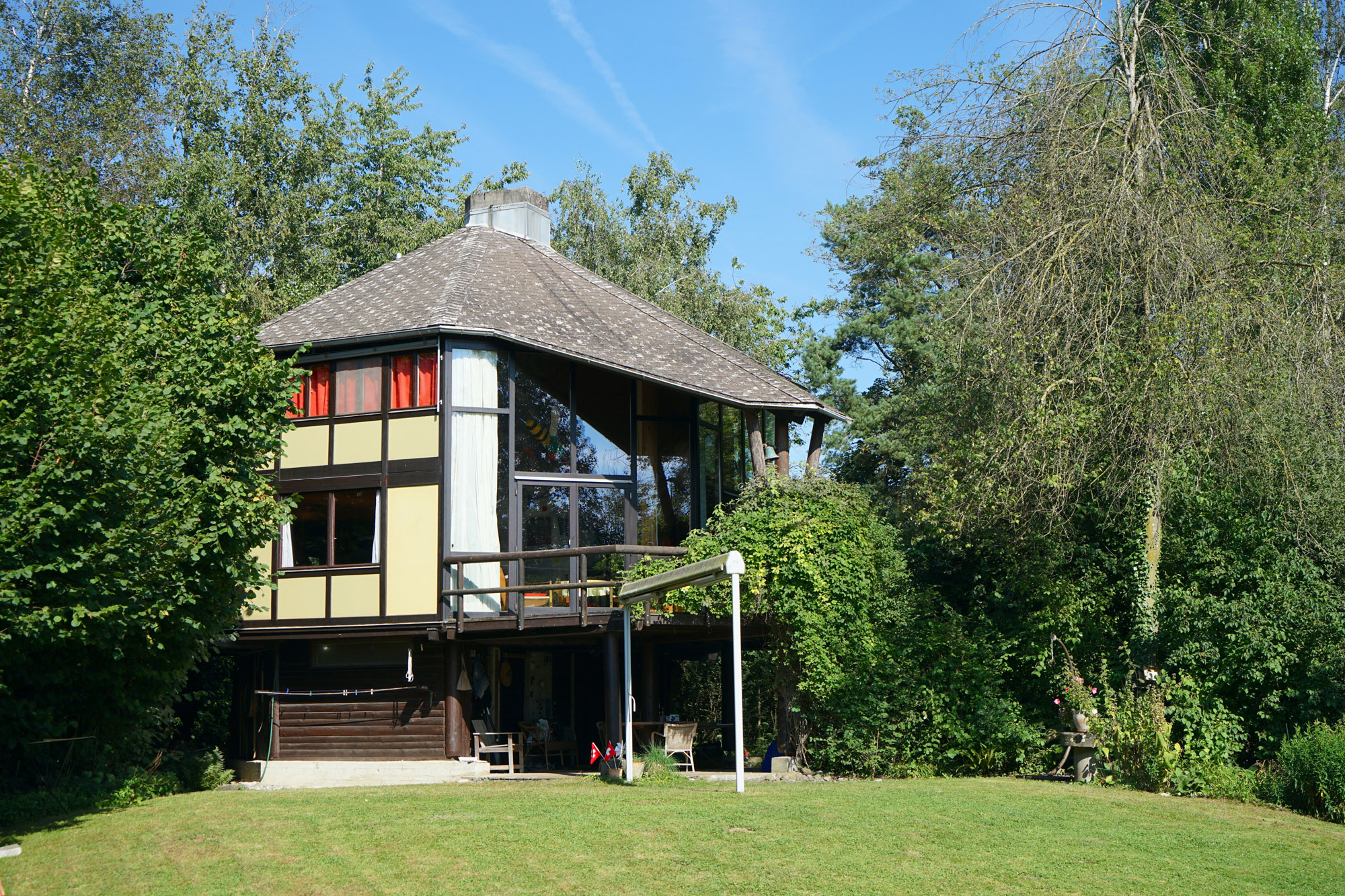 Meet Lisbeth Sachs, the lesser known Swiss modernist architect
Meet Lisbeth Sachs, the lesser known Swiss modernist architectPioneering Lisbeth Sachs is the Swiss architect behind the inspiration for creative collective Annexe’s reimagining of the Swiss pavilion for the Venice Architecture Biennale 2025
By Adam Štěch
-
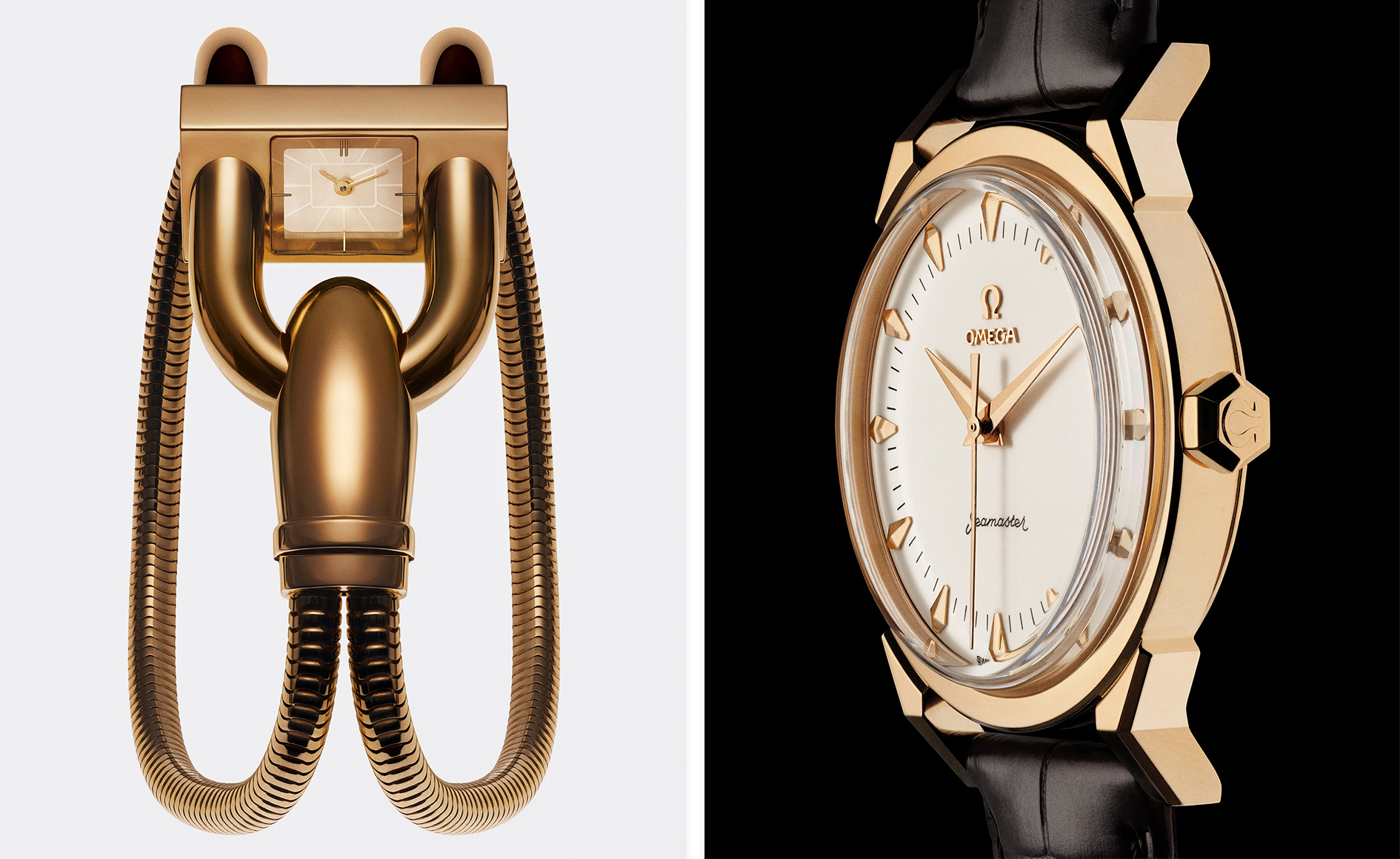 A stripped-back elegance defines these timeless watch designs
A stripped-back elegance defines these timeless watch designsWatches from Cartier, Van Cleef & Arpels, Rolex and more speak to universal design codes
By Hannah Silver
-
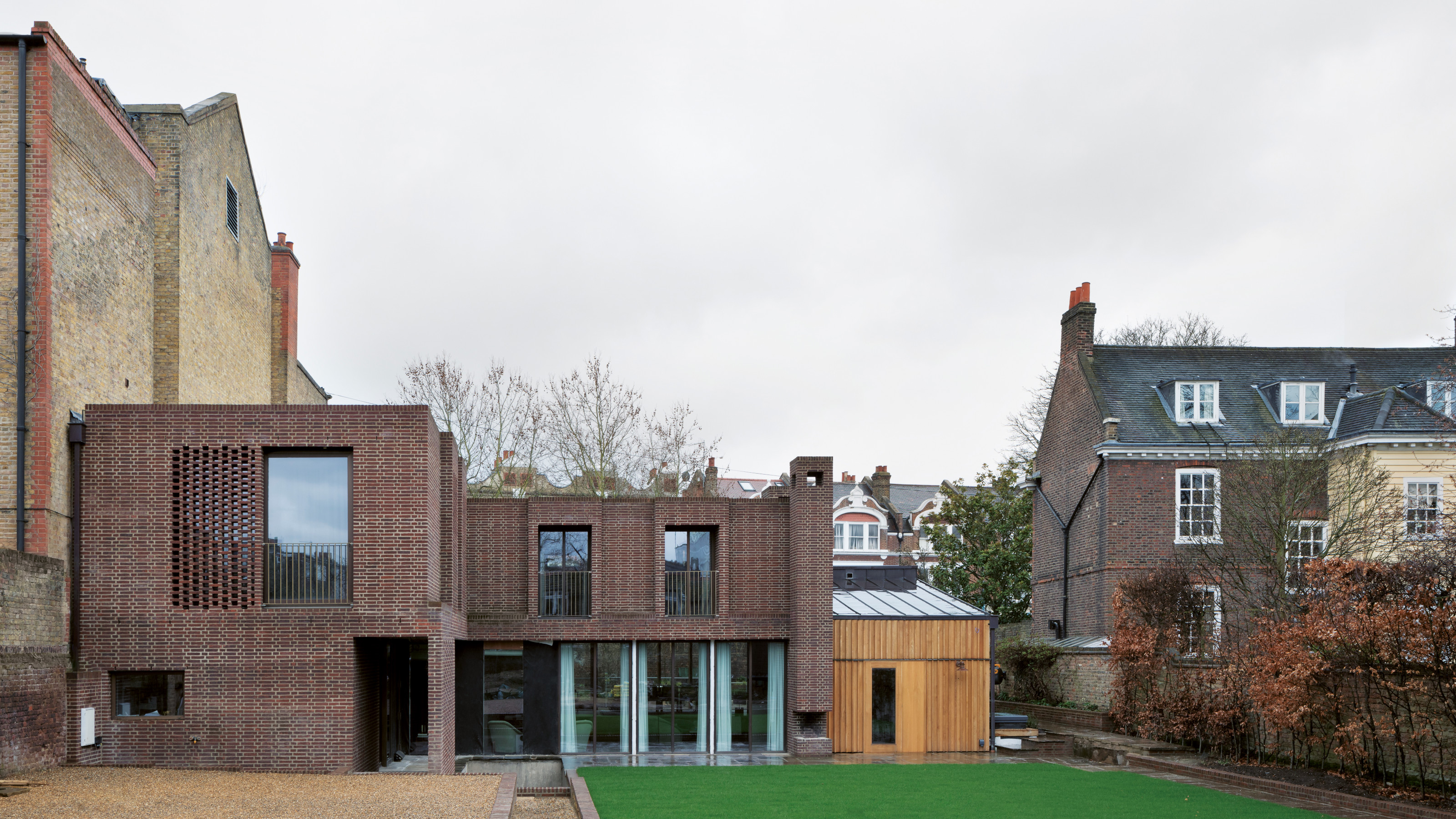 A new London house delights in robust brutalist detailing and diffused light
A new London house delights in robust brutalist detailing and diffused lightLondon's House in a Walled Garden by Henley Halebrown was designed to dovetail in its historic context
By Jonathan Bell
-
 A Sussex beach house boldly reimagines its seaside typology
A Sussex beach house boldly reimagines its seaside typologyA bold and uncompromising Sussex beach house reconfigures the vernacular to maximise coastal views but maintain privacy
By Jonathan Bell
-
 This 19th-century Hampstead house has a raw concrete staircase at its heart
This 19th-century Hampstead house has a raw concrete staircase at its heartThis Hampstead house, designed by Pinzauer and titled Maresfield Gardens, is a London home blending new design and traditional details
By Tianna Williams
-
 An octogenarian’s north London home is bold with utilitarian authenticity
An octogenarian’s north London home is bold with utilitarian authenticityWoodbury residence is a north London home by Of Architecture, inspired by 20th-century design and rooted in functionality
By Tianna Williams
-
 What is DeafSpace and how can it enhance architecture for everyone?
What is DeafSpace and how can it enhance architecture for everyone?DeafSpace learnings can help create profoundly sense-centric architecture; why shouldn't groundbreaking designs also be inclusive?
By Teshome Douglas-Campbell
-
 The dream of the flat-pack home continues with this elegant modular cabin design from Koto
The dream of the flat-pack home continues with this elegant modular cabin design from KotoThe Niwa modular cabin series by UK-based Koto architects offers a range of elegant retreats, designed for easy installation and a variety of uses
By Jonathan Bell
-
 Are Derwent London's new lounges the future of workspace?
Are Derwent London's new lounges the future of workspace?Property developer Derwent London’s new lounges – created for tenants of its offices – work harder to promote community and connection for their users
By Emily Wright
-
 Showing off its gargoyles and curves, The Gradel Quadrangles opens in Oxford
Showing off its gargoyles and curves, The Gradel Quadrangles opens in OxfordThe Gradel Quadrangles, designed by David Kohn Architects, brings a touch of playfulness to Oxford through a modern interpretation of historical architecture
By Shawn Adams